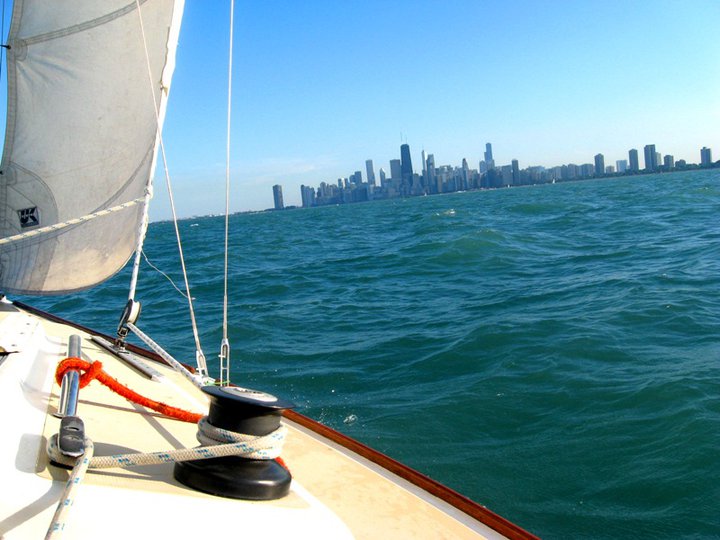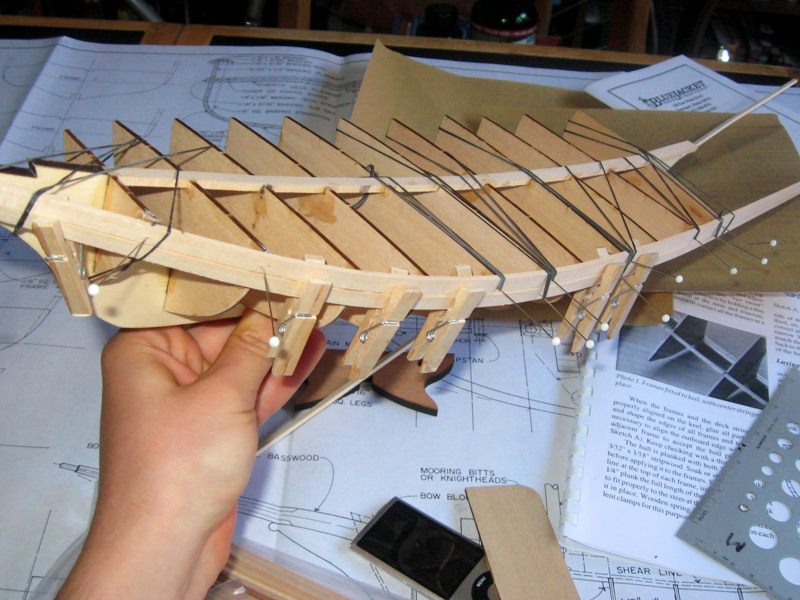Illustration Process: Composition Troubles
 Tuesday, December 20, 2011 at 12:05PM
Tuesday, December 20, 2011 at 12:05PM The illustration work towards In the Sounds and Seas: Volume 2 has gone remarkably smoothly--so smoothly, in fact, I've hardly given myself the time to write about it here. While each page of V1 felt labored in some way, burdened with making decisions of style and format that would affect the content of the rest of the project, I was able to jump into production of V2 with delightfully little friction. No composition struggles, no clogged pens, and no worries over how to draw hundreds of tiny bunnies. Wonderful!
That was the story, at least, until last week. The action so far in V2 revolves around the character who was revealed at the end of V1, walking through the coastal village, through the woods and to her home/workshop. The rest of the chapter takes place in the workshop and hints at the plans she is making that will carry her through the rest of the story, all of which revolves around the boat she is building.
In the chaos that had grown in my studio prepping and shipping etsy holiday orders, I had lost track of the composition mock-up I built to guide me through this book. Given my good fortune thus far I confidently started illustrating anyway:
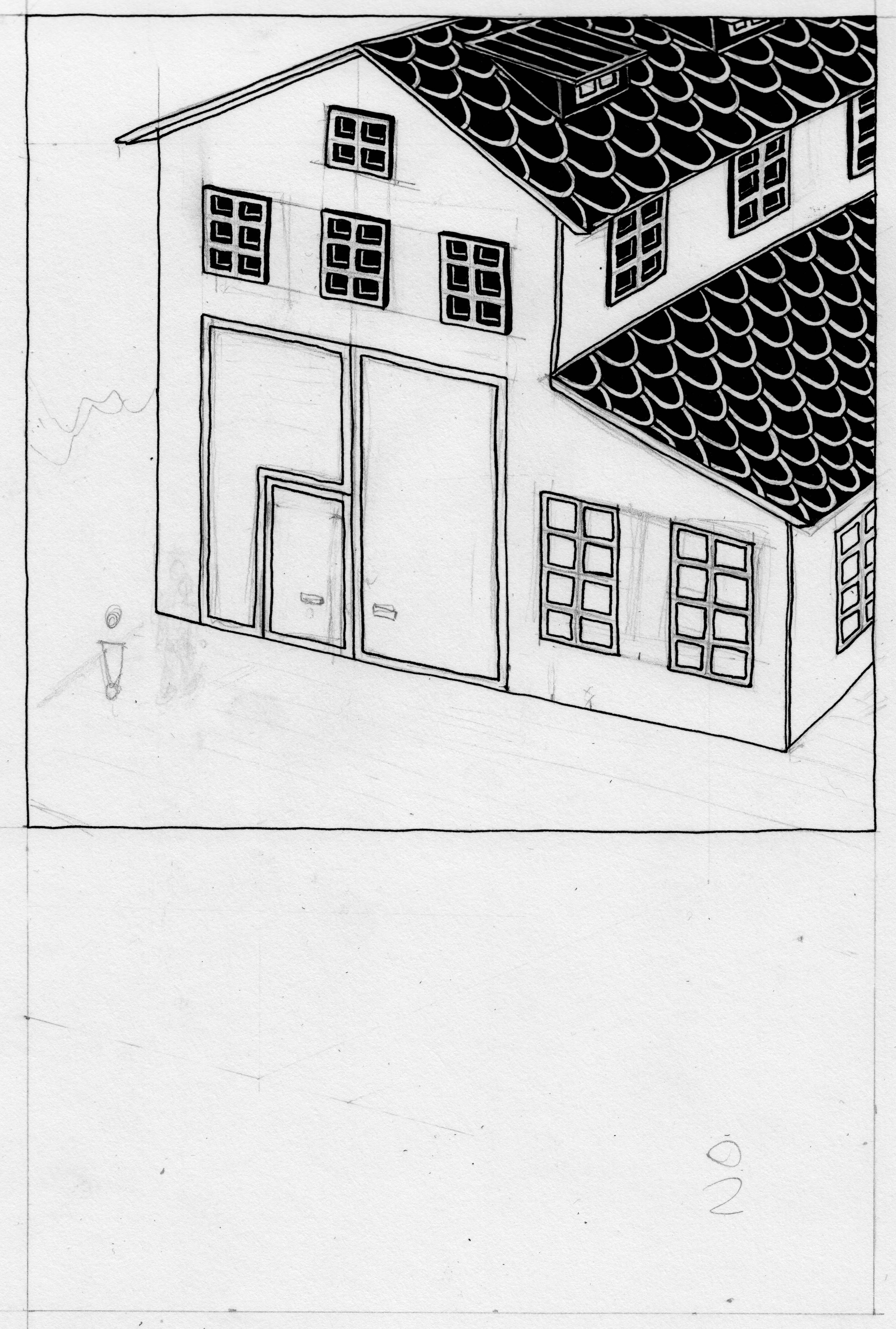 And I abandoned it here. The action of walking toward the door of the workshop is not very important and doesn't need to take up more than half the page. The function of this spread is the reveal of the boat: the boat is central to the action of the remaining 5 chapters, and if I'd kept this composition the boat would have been a footnote on the bottom third of the page. No good! So I started over:
And I abandoned it here. The action of walking toward the door of the workshop is not very important and doesn't need to take up more than half the page. The function of this spread is the reveal of the boat: the boat is central to the action of the remaining 5 chapters, and if I'd kept this composition the boat would have been a footnote on the bottom third of the page. No good! So I started over:
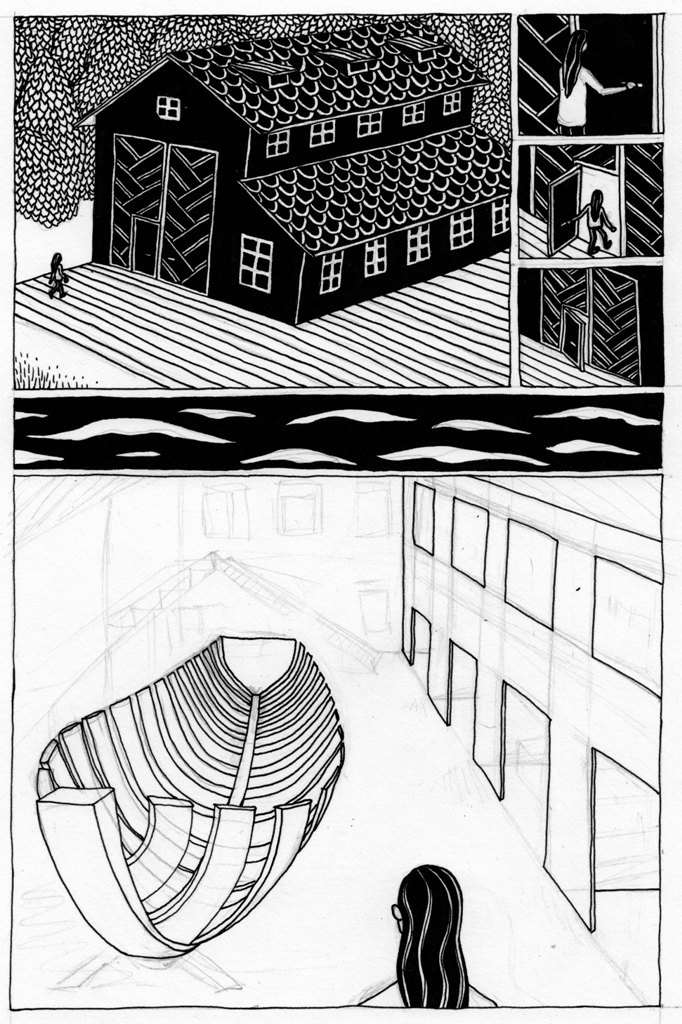 With this do-over, I minimized the action of entering the house, and intended to reveal the layout of the house and dramatically introduce the boat in construction in the bottom panel. As I inked the page, I grew less and less satisfied with the composition. Each spread that I have completed so far feels exciting and well made, and this one falls flat. The action of entering the house is still primary, the angle in the bottom panel reads a little forced, and as soon as I started filling in the long panel of water in the middle I realized it was lazy filler. Further, the boat is still not emphasized as the important information on the page: in many ways the boat is the primary character of the series, and this composition doesn't convey that at all. I abandoned this page as well.
With this do-over, I minimized the action of entering the house, and intended to reveal the layout of the house and dramatically introduce the boat in construction in the bottom panel. As I inked the page, I grew less and less satisfied with the composition. Each spread that I have completed so far feels exciting and well made, and this one falls flat. The action of entering the house is still primary, the angle in the bottom panel reads a little forced, and as soon as I started filling in the long panel of water in the middle I realized it was lazy filler. Further, the boat is still not emphasized as the important information on the page: in many ways the boat is the primary character of the series, and this composition doesn't convey that at all. I abandoned this page as well.
Frustrated at having spent so many hours drawing and inking pages that will not make it into the book, I spent a full day drawing spread composition after composition in miniature to try to work out the best way to tell the story these pages needed to tell. In doing that exercise, I realized that I was trying to accomplish too much, too literally, and in too little space. The whole workshop doesn't have to be laid out dollhouse-style; the important reveal is the boat. So I started again:
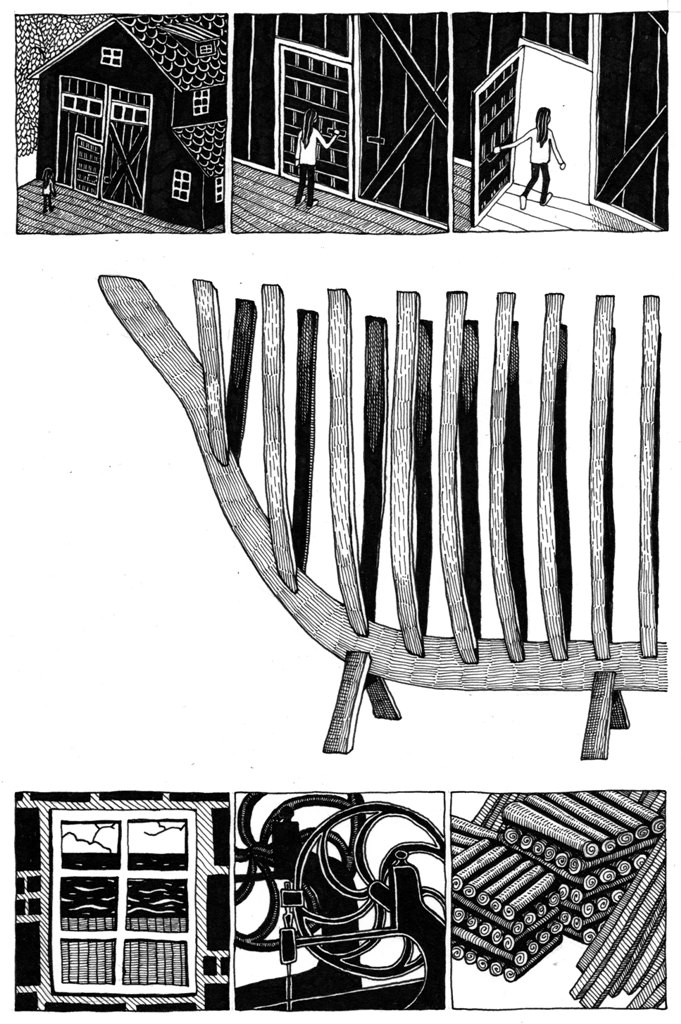 * * * * * * * * * * * * * * * * * * * * * * * * * * * * * * * * * * * * * * * *
* * * * * * * * * * * * * * * * * * * * * * * * * * * * * * * * * * * * * * * *
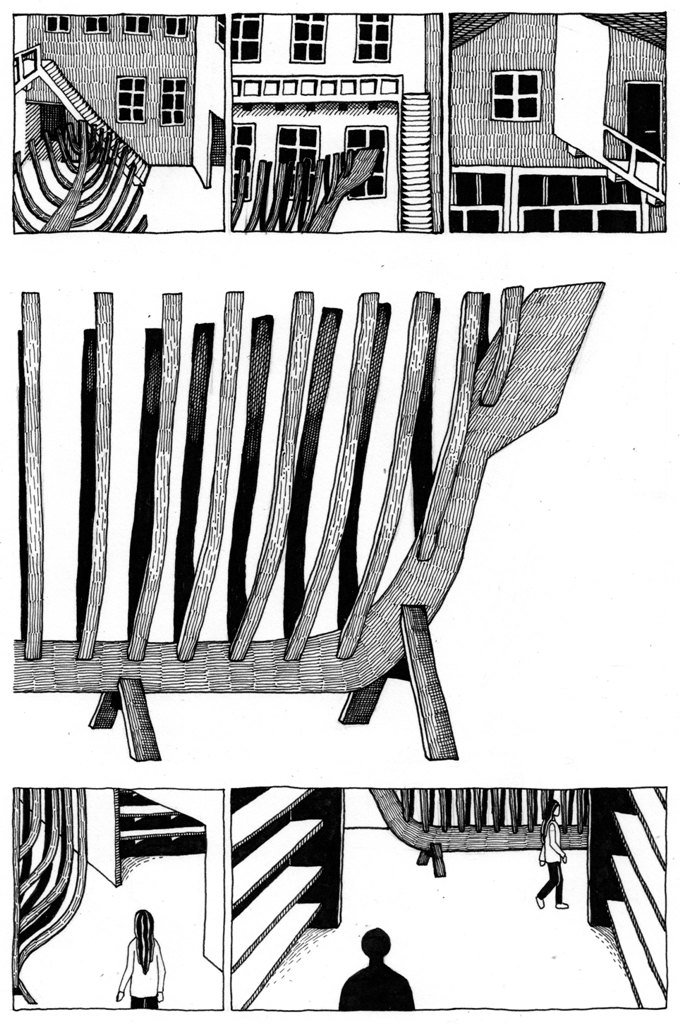
* * * * * * * * * * * * * * * * * * * * * * * * * * * * * * * * * * * * * * * *
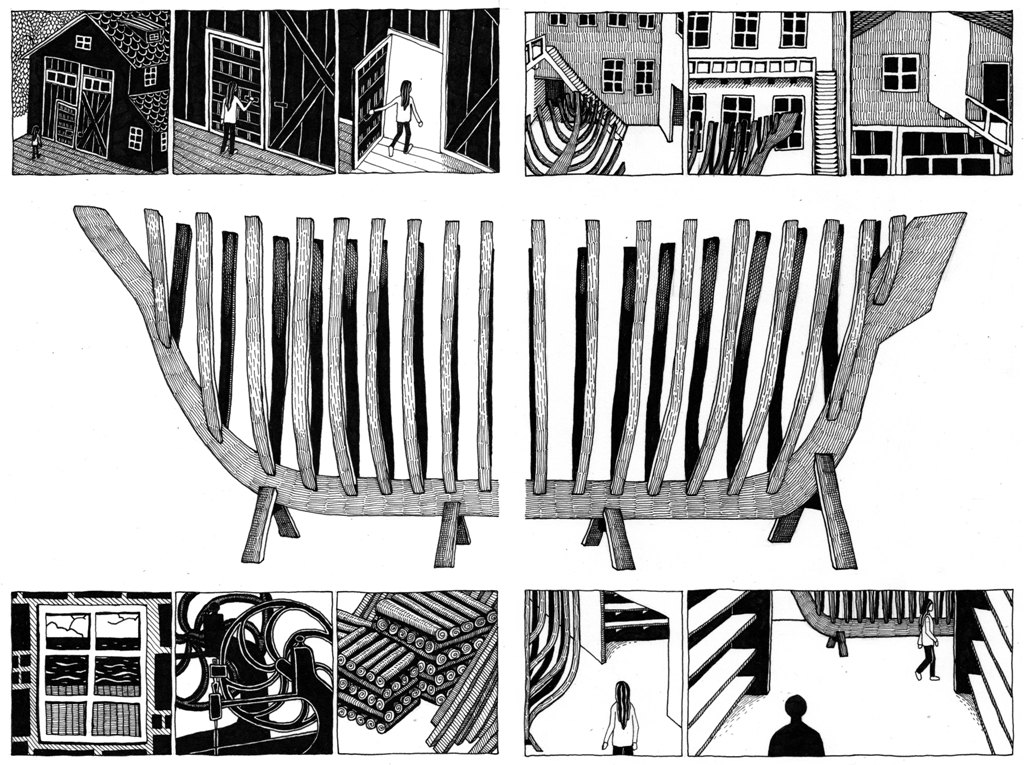
Success! I still want to do some more work on the light/dark balance on the recto page, but what a relief to be able to move on. After two weeks of sketching and penciling and inking and failing, I am very happy with this spread. Keep your fingers crossed that I get back to my old rhythm, and move forward quickly and well. Time's ticking toward my mid-March completion deadline!
 book,
book,  book arts,
book arts,  books,
books,  comic,
comic,  comic process,
comic process,  illustration,
illustration,  process in
process in  In the Sounds and Seas
In the Sounds and Seas 
